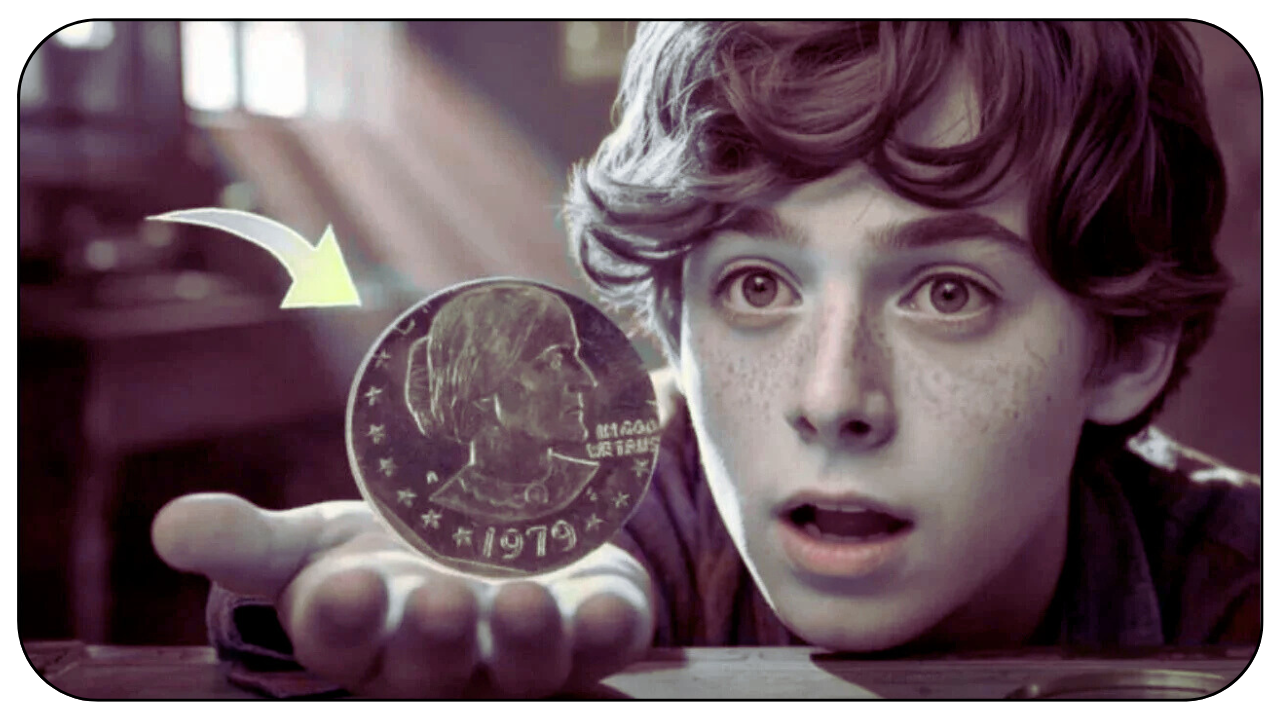A regular trip to the laundromat turned into a life-changing moment when a Susan B. Anthony dollar, found stuck in a dryer, sold for an incredible $39,500 at auction. This small coin, often mistaken for a quarter, proved to be a rare treasure that sent coin collectors into a frenzy. Discovered in a New Jersey laundromat, this coin’s unique story and rare features made it a must-have for numismatists. Let’s dive into what makes this coin so special, how to spot one, and why you should check your change for hidden gems.
A Coin with a Wild Story
The Susan B. Anthony dollar, first minted in 1979, was the first U.S. coin to feature a real woman, honoring the women’s rights pioneer. But it wasn’t popular because it looked too much like a quarter, so many ended up in jars or forgotten in circulation. This particular coin was found by a laundromat owner cleaning an industrial dryer, buried in lint and dust. At first, it seemed like just another worn dollar, but a sharp-eyed coin enthusiast noticed something unusual about its edges and surface, sparking a journey to a massive payday.
Why It’s Worth So Much
What made this coin a collector’s dream? It was a 1979 Susan B. Anthony dollar struck on a Jefferson nickel planchet—a rare minting error where the wrong metal blank was used. This made the coin smaller, lighter, and missing its usual edge lettering. Only a handful of these errors exist, and finding one in circulation, especially after surviving a laundry cycle, is almost unheard of. Graded by the Professional Coin Grading Service (PCGS), it was in great condition despite its wild ride, driving its auction price to $39,500 in Chicago.
| Feature | Details |
|---|---|
| Year | 1979 |
| Error Type | Struck on Jefferson nickel planchet |
| Mint Mark | None (Philadelphia) |
| Auction Value | $39,500 |
| Condition | Extremely fine, PCGS graded |
How to Spot a Rare Susan B. Anthony Dollar
You don’t need to be a coin expert to find a valuable Susan B. Anthony dollar, but you need to know what to look for. Check the date—1979 coins are key, especially the “Wide Rim” or “Near Date” variety where the date sits close to the edge. Look for oddities like unusual edges, missing lettering, or a smaller-than-normal size, which could mean a mint error. The coin’s condition matters too—shiny, unscrached coins are worth more. A magnifying glass can help you spot these details in your change.
- Check the date for 1979 or 1981 coins.
- Look for a “Wide Rim” where the date is near the edge.
- Inspect for errors like odd sizes or missing edge lettering.
- Don’t clean coins; it can ruin their value.
Where These Coins Hide
Susan B. Anthony dollars are still out there in everyday places—vending machines, coin jars, or even laundry dryers. Because they weren’t popular, many were tucked away and forgotten, meaning rare ones could still be in circulation. Check places like old piggy banks, cash registers, or your pocket change. Stories of big finds, like this laundromat discovery or a $1 million coin in a CoinStar machine, show that treasures can turn up anywhere.
What to Do If You Find One
If you think you’ve found a rare coin, don’t toss it back into your change! Take it to a coin dealer or get it graded by a service like PCGS or NGC to confirm its value. Handle it carefully and store it in a protective sleeve to avoid scratches. This laundromat coin’s story shows that even a beat-up dollar can be worth thousands if it has the right error or rarity. With a little luck, your next coin could be a game-changer.
The Susan B. Anthony dollar proves that ordinary-looking change can hide extraordinary value. Next time you’re sorting coins or cleaning out a dryer, take a closer look. That dollar you almost ignored might just be a $39,500 treasure waiting to make history at auction!
